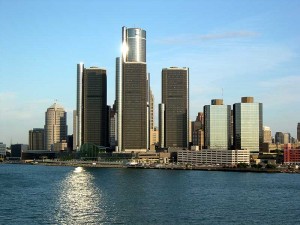
Learning From Detroit
As we mentioned earlier, the Knight Foundation has gone national with its arts grants. As part of this initiative Dennis Scholl, Knight Foundation’s vice president of the arts and Miami program director, took a recent trip to Detroit to check out the city’s cultural community. His thoughts ran as an op-ed piece in the Detroit Free Press on May 2, 2010. Below is an excerpt – read on for the full text & check back often for updates on arts grants in Detroit and throughout the country.
I recently spent 2 1/2 days in the heart of Detroit’s cultural community, meeting with many of the people and organizations that make Detroit such a vibrant place for the arts. I came away dazzled by the breadth of talent. I visited with arts groups, then spent a day on a bus tour of the city’s arts venues with National Endowment for the Arts Chairman Rocco Landesman. I found an arts community that is a model for our new economic times. Detroit has clearly learned how to make arts work in a difficult economic environment.
Here are a few things that arts communities across the nation can learn from Detroit:
- A spirit of collaboration: I have never seen a more sincere collaboration in an arts community. One organization, Matrix Theatre Company, pointed to 55 collaborative projects in recent years!
- Successful adaptive reuse: The building boom is over, and arts organizations need to return to their roots of re-creating old buildings. Nowhere was that more evident than the CCS project, coupled with the Henry Ford Academy in the Argonaut Building, now the Taubman Center. The energy in that building was incredible, with students from grade six to post-graduate engaged in a high-tech learning environment.
- Minority opportunity: Sphinx, Mosaic, Compas, Plowshares all strive to provide real introductions and seek to put people of color in the orchestra pit and on the stage.
- Respect for other cultures: The Arab American Museum and Charles Wright Museum are excellent examples of a diverse city that respects and is open to learning about all cultures.
- International quality: The Detroit Jazz Festival, Detroit Institute of Art (oh my, I can’t stop thinking about that Bronzino painting!), Detroit Symphony Orchestra, Detroit Science Center and Cranbrook Academy are all world-class institutions that, while struggling to remake themselves in the face of a shrinking population and budget, remain the gold standard in their respective disciplines.
- Young creatives: Detroit is full of them, and places like MOCAD, an incredibly hip contemporary art museum, is drawing them in with inventive programming. Maybe that’s why a recent Gallup poll funded by the Knight Foundation found so much attachment to the place among 20-something Detroiters.
- Resilience: Unbelievably, in the leanest market in our lifetimes, virtually none of the Detroit arts nonprofits has gone under, according to Maud Lyon of the Detroit Cultural Alliance. Chazz Miller’s work with the Artist Village certainly exemplifies this.
- Committed, innovative funders: I sat at a long table full of foundations committed to keeping the arts alive and vibrant in Detroit. Kresge, Skillman, Community Foundation for Southeast Michigan and many others are all listening carefully and doing innovative work in arts funding.
- Youth-based organizations: Detroit has an incredible array of organizations that use the arts to open kids’ eyes to the world. Compas, Mosaic, Y Arts, Sphinx … Too many to count.
- Critical mass: I saw longstanding and brand new arts groups, both for-profit and not-for-profit, working side by side with developers to establish a creative corridor of art experiences that will restore vibrancy to the Midtown neighborhood.
I know the difficult issues facing Detroit’s cultural economy — a disappearance of state and local funding, a series of debt-laden legacy institutions, inflexible union contracts and large overheads, and a lack of political acknowledgement of the significant role that culture plays in this city’s economy. Of course, the other side of the coin is that the arts community must be willing to prove its contribution to elected officials in order to be taken seriously.
But the real story is that I came away dazzled by the artistic excellence, resources, vibrancy and commitment of Detroit’s arts community. Chairman Landesman’s mantra for the new NEA is “art works.” Nowhere is that being proved more than in this city.
Recent Content
-
Artsarticle ·
-
Artsarticle ·
-
Artsarticle ·

